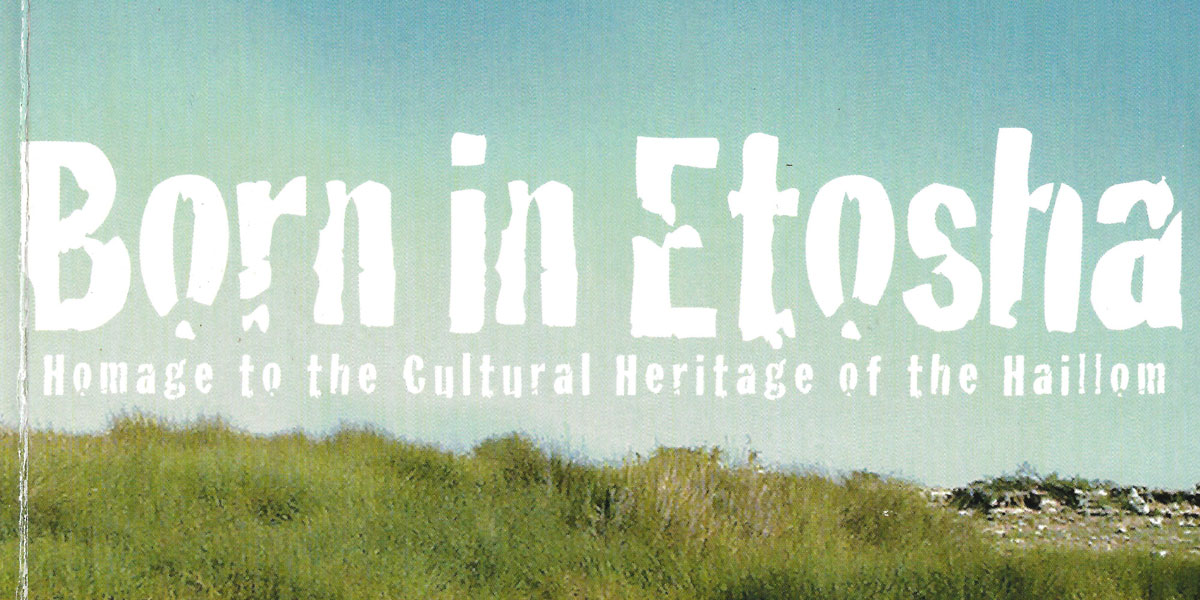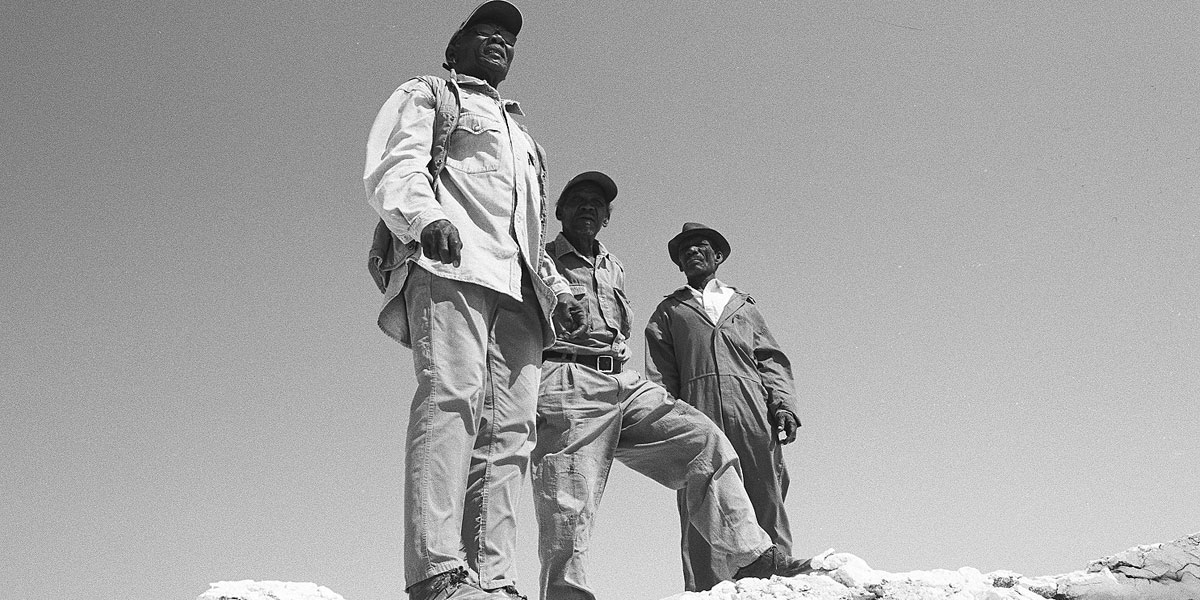The Xoms |Omis Project
An indigenous historical resource
Available publications on Etosha focus mainly on the wildlife and natural resources of the park, while the few published histories are written from the perspective of the game wardens, colonial officials and policy-makers responsible for its conception and development. No popular publication pays much attention to people such as the Hai||om who lived in the area, and whose lives the proclamation of the park completely transformed.
This book project is an indigenous historical resource on the Etosha National Park. While not attempting to provide a comprehensive or systematic account, through images, personal reminiscences, character sketches and depictions of some of the more important waterholes, it pays homage to the forgotten history of the Hai||om. The author does not dispute the fact that there are many stories of other former inhabitants of the area adjoining the pan awaiting to be told. Maybe this book can be seen as a starting point, and act as a spur to further investigation.
Part of the Book cover - "Born in Etosha - Homage to the cultural heritage of the Hai||om"
An alternative journey through Etosha
The book is designed so that it can accompany the reader on a journey through Etosha, from the Andersson Gate in the south to the Lindequist Gate in the east, reincorporating the culture and history of the area into the natural landscape. Selected waterholes and other culturally relevant locations that are accessible to visitors on the main tourist routes between Okaukuejo and Namutoni serve on the one hand to portray the life of the Hai||om who once lived there, and on the other to highlight aspects of the history of the park. Through the lens of the book, the reader can perceive the area from a different perspective: the fiction of Etosha as a vast and pristine wildlife refuge, unsullied by humankind, is replaced by a realisation of its being suffused with the history of its former human inhabitants.
The documentation of Hai||om cultural heritage in Etosha National Park began in 1999 as a small, collaborative project involving researchers from the University of Cologne, the University of Cambridge and a group of Hai||om elders who were determined to ensure that their cultural history did not die with them. As the process gained momentum, it became formalised into to the Xoms |Omis Project (Etosha Heritage Project), now managed through the Legal Assistance Centre (LAC) in Windhoek.
It is the aim of the Xoms |Omis Project that the documentation of Hai||om cultural heritage should deliver a unique body of cultural, historical and environmental knowledge that will serve to build capacity among the Hai||om and provide a sustainable means of income generation. The documentation was undertaken in partnership with the Multidisciplinary Collaborative Research Centre ( ACACIA) at the University of Cologne, Germany; the Working Group of Indigenous Minorities in Southern Africa (WIMSA), Windhoek, Namibia; Open Channels, London, England; and Strata 360, Montreal, Canada.
Photo James Suzmann, 2002
Acknowledgements
The author and the Xoms |Omis Project of the Legal Assistance Centre would like to thank the following people for their contributions to the project:
- the Hai||om elders, who have been the main drivers of the project, for the patience and selflessness with which they shared their knowledge and memories with me. In particular, I pay tribute to Hans Haneb, Willem Dauxab and Jacob |Uibeb, who died during the course of the project; Kadisen ||Khumub and Jan Tsumeb, who reside in Okaukuejo and Oshivelo; and Ticky !Noboses from Outjo;
- all the other Hai||om who contributed in one way or another to the production of this book;
- the Ministry of Environment and Tourism, for permission to conduct research in Etosha National Park;
- the layout artist, Andrew Weir;
- the editor, William Hofmeyr;
- Dr Gillian Maggs-Kölling and Silke Rügheimer of the National Botanical Resource Institute, and Jay Bolin, for technical assistance with botanical matters;
- Prof. Wilfrid Haacke, for assistance with Hai||om terminology and orthography;
- the Ministry of Environment and Tourism, the National Archives of Namibia, the Ministry of Lands and Resettlement, the Etosha Ecological Institute, Hanneliese Kendzia (re Liesel Aschenborn Collection), Ralf Vogelsang, James Suzman, Harald Sterly, Bill Kemp, Silke Rügheimer and Jay Bolin for providing photographs and maps;
- the Finnish Embassy, Namdeb (Namibia), Comic Relief (England), the German Research Council (DFG) and the German Agency for Technical Cooperation (GTZ), who provided financial support for the overall documentation project; and
- the Embassy of the Federal Republic of Germany, for sponsoring the book project, and in particular, Frau Petra Schmidt for her support and patience.


